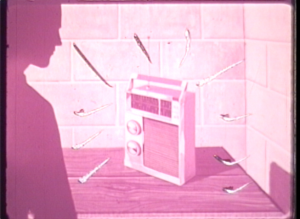
From vintage 16 mm animation stands to futuristic video editing software, students in Rice’s Film & Photography Department apply a wide range of techniques and technologies to create modern day masterpieces.
Students in Rice’s Film & Photography Department rely on a vast array of photo and video-making technology everyday to complete their assignments. Addison Verger, a senior double majoring in Kinesiology and Film Studies, has been involved with the department since his freshman year. “I don’t own my own video camera or have access to Adobe Premiere, a video editing software, on my personal computer, so utilizing the department’s equipment is a necessity.” Students taking courses in the Film & Photography department have access to a number of computer labs in the Rice Media Center. Each of these labs contains specific computing software, such as photo editing software, like Adobe Photoshop, and sound editing software, like Adobe Audition, that allow the students taking these courses to have all the tools they need right at their fingertips.
Students utilize a variety of old and new technologies to create a finished product. Verger took FILM 428, Filmmaking II, last semester where students utilized “Do-It-Yourself” and modern film techniques to create 16 mm art films. “For one of our projects we took vintage, stock reels of film from old anthropology documentaries and children’s cartoons, cut them up, and bleached, scratched, and hand painted them, to make a new piece of art.” While this process of making a film may seem old fashioned, the students still utilized current editing software to create their final product. “Once our cut up bits of film were assembled, we had to put them on a reel and then run them through a projector that transferred them onto a tape. With the tape, we were able to import the footage into Adobe Premiere and edit the film as we would any other, to overlay our audio recordings and alter color, etc. It was an interesting experience to take such a ‘hands-on’ approach to filmmaking, rather than just sitting at a computer.”
For an animation assignment in the same course, Verger said the class had to use an Oxberry Animation stand: a vintage looking piece of equipment that allowed the class to make stop motion animations. “It was really eye opening to participate in the very slow process that is animation. When you’re watching an animated film, you hardly ever think about how the animators created this finished product. My group’s film came out to two and a half minutes but it took us about 12 hours just to film it.”

